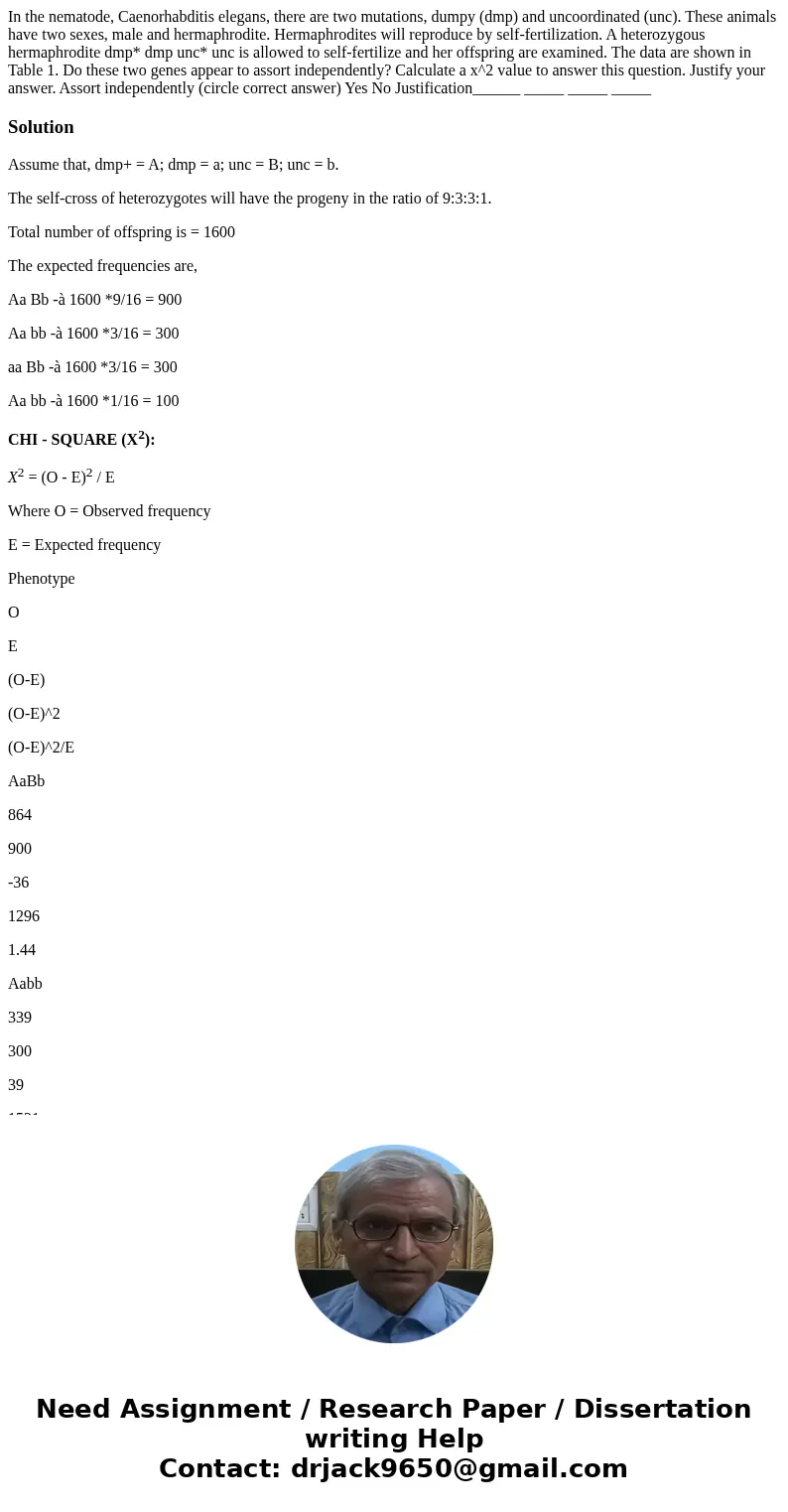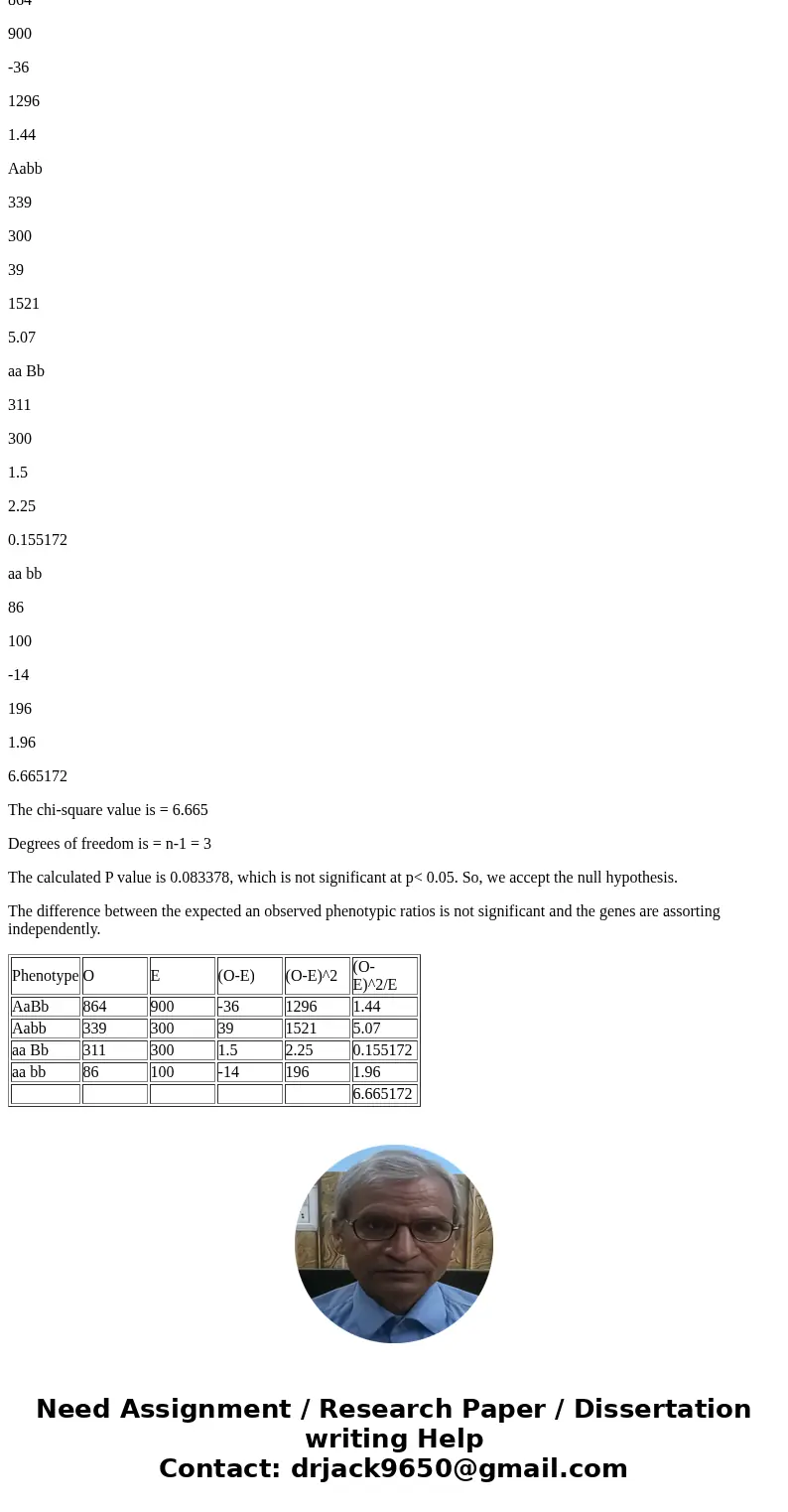In the nematode Caenorhabditis elegans there are two mutatio
Solution
Assume that, dmp+ = A; dmp = a; unc = B; unc = b.
The self-cross of heterozygotes will have the progeny in the ratio of 9:3:3:1.
Total number of offspring is = 1600
The expected frequencies are,
Aa Bb -à 1600 *9/16 = 900
Aa bb -à 1600 *3/16 = 300
aa Bb -à 1600 *3/16 = 300
Aa bb -à 1600 *1/16 = 100
CHI - SQUARE (X2):
X2 = (O - E)2 / E
Where O = Observed frequency
E = Expected frequency
Phenotype
O
E
(O-E)
(O-E)^2
(O-E)^2/E
AaBb
864
900
-36
1296
1.44
Aabb
339
300
39
1521
5.07
aa Bb
311
300
1.5
2.25
0.155172
aa bb
86
100
-14
196
1.96
6.665172
The chi-square value is = 6.665
Degrees of freedom is = n-1 = 3
The calculated P value is 0.083378, which is not significant at p< 0.05. So, we accept the null hypothesis.
The difference between the expected an observed phenotypic ratios is not significant and the genes are assorting independently.
| Phenotype | O | E | (O-E) | (O-E)^2 | (O-E)^2/E |
| AaBb | 864 | 900 | -36 | 1296 | 1.44 |
| Aabb | 339 | 300 | 39 | 1521 | 5.07 |
| aa Bb | 311 | 300 | 1.5 | 2.25 | 0.155172 |
| aa bb | 86 | 100 | -14 | 196 | 1.96 |
| 6.665172 |


 Homework Sourse
Homework Sourse